When we talk of architecture, one always thinks about the mesmerising historical monuments which our ancestors have given to us and walking through the heritage itself gives a feel of living the moments of the past glory in the present. The structures which were built centuries ago still have an aura that can be felt. India is rich and full of such structures, many of which are still being explored by conservationists. The heritage in India is so vibrant that it attracts people from worldwide to see and experience the events of the past. India has no limits in terms of historical structures, styles and eras in which they came up. The oldest civilization known can be traced to the west regions in Gujarat, Dholavira, which is an ancient Harappan site found in India.
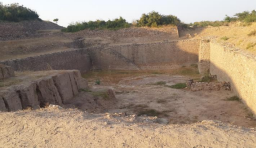
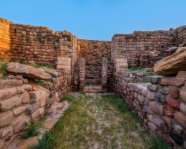
This site is still under excavation, not many visitors can be found on this site, but people who have visited the site have seen how human form of settlement started. It gives a glimpse of how houses were planned and how the basic infrastructure was laid in the form of drainage patterns, grain storage, and developing utensils for daily use.
On our way to Dholavira there lies a small settlement called Hudko village. This village highlights the vernacular form of architecture. The houses constructed here are of mud bricks, sun dried with thatched roofs.


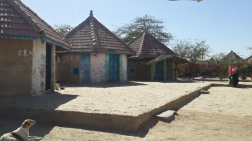
The mud has been used as a plaster and wooden barks have been used as the base for making walls of the structure that act as the entrance or as veranda to their houses. This place gives a feel to people living in the metropolitan cities or towns that how our ancestors used to build according to the climate and the local material which could be easily made available. The people residing in the village are mainly the workers who work in the Harappan site, rest who don’t are engaged in craftsmanship making local traditional crafts and selling them in the nearby towns, city or market which is most accessible to them.
In Gujarat there are many such sites and structures which belong to different dynasties and this is the reason that it has been termed as a heritage city. The Aaina and Parag Mahal which lies in Bhuj is an extraordinary example of carving and how the projections were made out of stone.
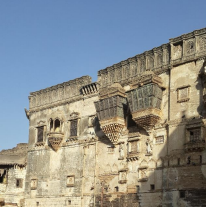
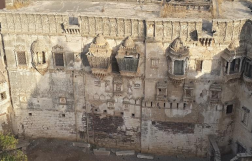
Aaina mahal is an 18th-century palace. This palace was designed in the local style and decorated in the European style with glass, mirrors and tiles. Although access to this palace is not allowed, going around the complex gives you an idea how particular the makers were in the past and the dedication they have. Next to Aaina Mahal is the beautiful Parag Mahal, built in 1860’s. This palace is made up of Italian marble and sandstone, having grand halls, beautiful interiors and chandeliers. It also has a clock tower, which offers a panoramic view of the city.

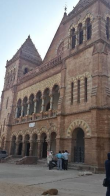
When we talk about Gujarat, how can one forget to talk about Ahmedabad city, the city which has Jama Masjid, Sidi Sayed Mosque, Adalaj Step well, Teen Darwaza, Jhulta Minar, Sarkhej Roza, Dada Hari, Vav, Bhadra Fort, Chattardi.etc. and of course, the Heritage walk along the street and the old markets in the city. All the structures and places which are present in Gujarat have their own significance in history. The Sidi sayed mosque is entirely arcuated and is known for its ten intricately carved stone lattice work windows (jalis) and rear arches, whereas, Jama Masjid is one of many examples of the Gujarat style of architecture in Ahmedabad, belonging to 15th century, having fifteen domes covering the prayer hall.
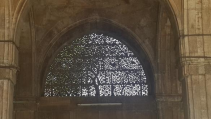
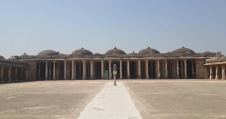
Chhatris are popular all over Rajasthan and Gujarat. The Royal cenotaphs are usually associated with the resting places of the rulers of the region. It was constructed by the Jadeja rules in the 18th century.
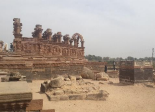
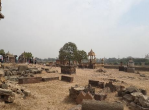
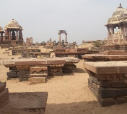
The Adalaj step well is a five stories deep structure built in 1498 in the memory of Rana Veer Singh, it is also called “Vav” and is made out of sandstone in the Solanki architectural style having octagonal in plan at the top.
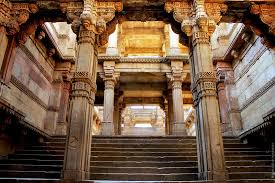
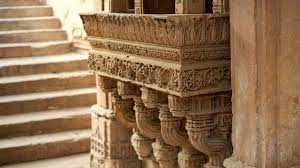
Each and every structure present in the city reflects a different time period. Every structure has its own uniqueness as experienced by the visitor. Architecture has its roots in heritage, be it in the form of structure, city planning, decoration, facade development, etc. The technologies and the knowledge of building and planning which were used in the past till date have its implementations. It’s because of these structures and places that the visitors are drawn towards them, who want to explore more of the history and have an enjoyable and memorable time there. With the changing times and the modernization of the world, these structures have begun to gain value due to their intricate details and the expertise with which these were constructed. We at Sushant University, one of the top architecture colleges in Delhi, make an effort to provide our students with the best resources and training to inculcate this expertise in them, in order to make them reach even greater heights in the field.
